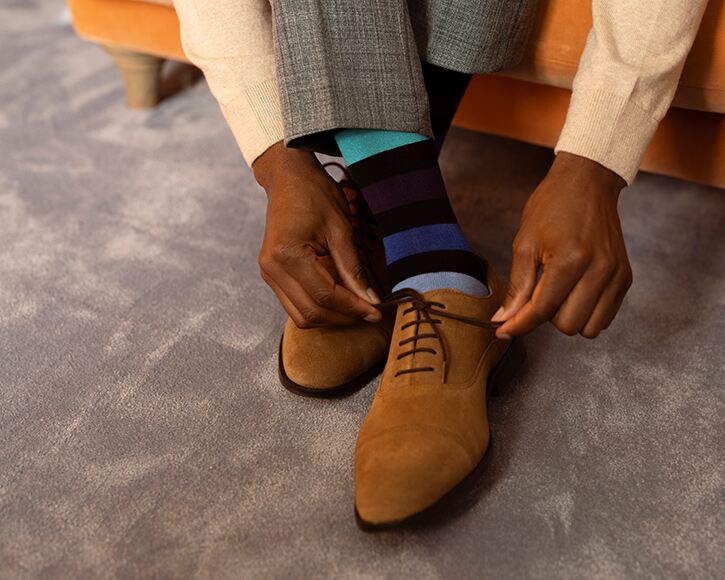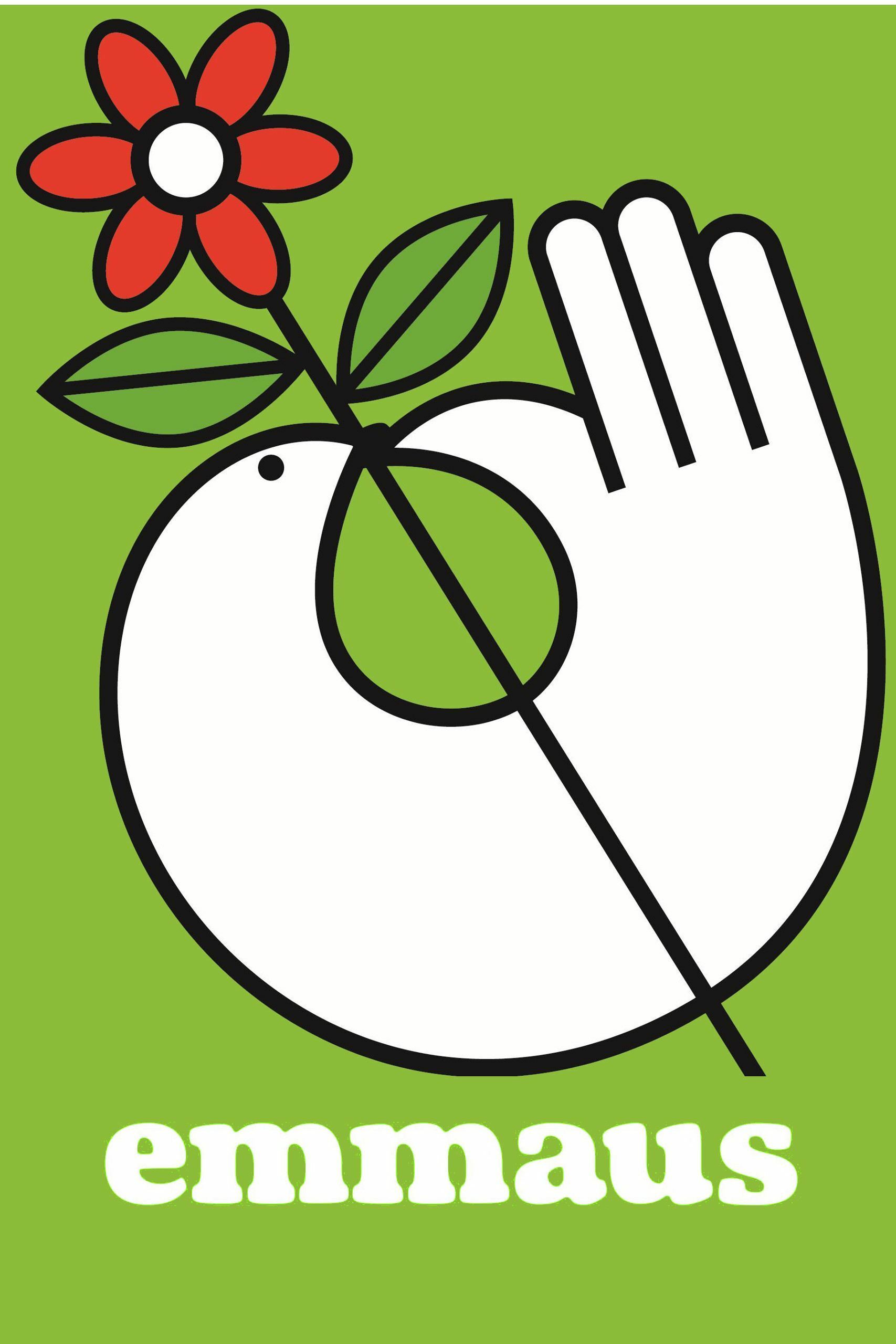Why do we wear socks?
Posted by SOCKSHOP
We all know socks can keep us cosy, be a real fashion statement, or make the perfect go-to gift. In fact, there are several reasons why socks are one of the most important parts of our wardrobe. The humble sock should not be taken for granted! In this article, we’ll learn why we wear socks, how they came to be, and why they remain an important staple in our wardrobe.

Why do people wear socks?
You might think the answer is pretty obvious here: walking around barefoot on a hard floor and feeling clammy with all that skin-on-shoe action or opting for your favourite pair of socks to keep you comfy? The choice is simple, right? We think so too, although the benefits of wearing socks don’t end there.
Here’s a brief overview of some of the health and wellbeing advantages of wearing socks before we take a look at the story of our favourite clothing item in more detail:
-
They keep feet warm and dry.
-
They protect our feet from germs, blisters, and conditions like Athlete’s Foot.
-
They provide a moisture barrier.
-
They protect shoes from germs, stains and odours.
-
They reduce stress on feet (especially when walking or playing sports).
-
They can upgrade your outfit and show off your style!
A brief history of the sock
You may not realise it, but socks are one of the oldest types of clothing still in use today. Since the Stone Ages, and long before trousers or t-shirts were a thing, socks have been worn for various purposes. It might be easy to overlook socks, but they’ve had a pretty interesting journey throughout history.
The word ‘sock’ comes from the Latin ‘soccus’, which translates as ‘slipper’. However, using foot coverings for protection dates back to ancient times. The ancient Egyptians wore socks from around AD 250. Later, the Romans began sewing leather and woven fabrics together to make more fitted socks called ‘udones’. In ancient times, socks were made from animal materials, like leather or matted fur, and tied around the ankles.
Socks in the Middle Ages were brightly coloured and often used to make a fashion statement. As trousers got shorter over the next few centuries, socks got longer…and more expensive. By the end of the Middle Ages, socks were so expensive that they had become a status symbol among the nobility. They were highly ornamental to attract attention.
During pre-industrial times, socks were made through a time-consuming process, so they were still strictly reserved for members of high society. Poorer members of society wore footwraps and simple cloths to protect their feet and to keep them warm. Until the 17th century, socks as we know them today were actually called stockings!
The industrial age brought huge changes to the way socks were made. Until 1800, socks were produced by both hand-knitting and machine-knitting processes. After this point, machine knitting became the predominant method. Technological innovations in the textile industry and an increasing demand for garments led to greater accessibility of socks.
As society progressed, so did socks. They were made from wool, silk, and cotton, and whilst they could still be a display of wealth, socks served an important practical purpose since indoor heating didn’t really exist until the 20th Century, so it was especially important to keep those toes warm! The introduction of nylon in the 1930s was a huge deal for the sock industry, and synthetic fabrics changed the textiles world forever.
Nowadays, the most common fabrics for socks include cotton, wool, polyester, and nylon, but you can also find socks made from recycled fabrics and plastics, bamboo socks (like our own range from Lazy Panda), and other fabrics. There is now a sock to suit every need, from comfort to health and personal style.
To sock or not to sock? The benefits of wearing socks
Health and hygiene
By going barefoot in closed-toe shoes, you may be inviting germs and sweat into the soles, as well as increasing the likelihood of blisters. Typically, this results in discomfort and a nasty odour that you’ll probably want to avoid! Socks provide a layer of comfort between our feet and shoes. This acts as a moisture barrier, protecting our shoes for longer and minimising friction.
Socks can also keep various foot conditions, such as Athlete’s Foot and Ringworm, at bay. That’s because your feet sweat about half a pint per day (nice!) and many shoes are lined in synthetic materials which aren’t very breathable. This can cause moisture, bacteria, and heat to get trapped inside shoes.
To avoid this, you might want to opt for a breathable fabric like wool socks. These are great for managing moisture and keeping feet warm in the winter and cool in the summer. Our bamboo socks are also a great option for temperature control. They help to wick moisture away from the skin to keep feet dry and comfortable.
Compression socks offer another health benefit to those with poor circulation in the legs and feet. They’re an especially wise choice for those who travel often or spend long periods of time sitting or standing. These socks can help to prevent deep vein thrombosis, to energise legs and to improve muscle efficiency.
Comfort and support
If you find that wearing socks can dig into your legs and leave uncomfortable marks, you might want to try comfort cuff socks. These have a softer top to grip the leg more gently.
Showing off personal style
A sock for every occasion
It’s pretty clear that the benefits of wearing socks go beyond just making your feet comfortable. No matter what you get up to, socks are absolutely essential. To us, socks are never just socks - they can elevate an outfit, make you feel good, keep you toasty or cool, and keep your feet fighting fit.
From wardrobe essentials to a go-to gift, here at SOCKSHOP we believe that socks are always a good idea. Browse our huge collection of socks and treat yourself today!


 Australian Dollar($)
Australian Dollar($) Danish Krone (kr)
Danish Krone (kr) Euro (€)
Euro (€) Japanese Yen (¥)
Japanese Yen (¥) Norwegian Kroner (Kr)
Norwegian Kroner (Kr) Swedish Krona (kr)
Swedish Krona (kr) Great British Pound (£)
Great British Pound (£) US Dollar ($)
US Dollar ($)







Get involved and tell us what you think. Comments may be subject to moderation.